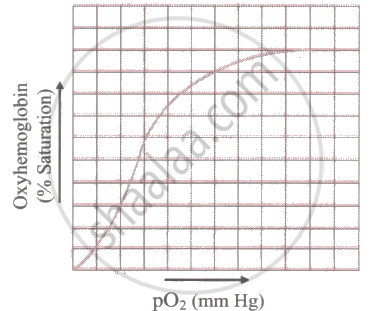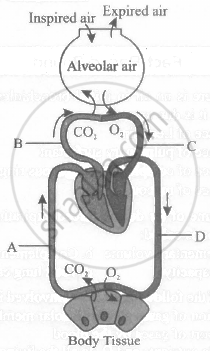Advertisements
Advertisements
Question
Have you heard about hypoxia? Try to gather information about it, and discuss with your friends.
Solution
Hypoxia is a condition characterised by an inadequate or decreased supply of oxygen to the lungs. It is caused by several extrinsic factors, such as reduction in pO2, inadequate oxygen, etc. The different types of hypoxia are discussed below.
This condition is related to a decrease in the partial pressure of oxygen in the body's diet/tissues. This causes less supply of oxygen. The pressure of O2 in the atmosphere decreases by an amount above 8000 feet. Due to this, symptoms like headaches, vomiting, dizziness, mental fatigue, difficulty breathing, etc. are seen. This is called artificial hypoxia. This disease is caused by mountaineers. Due to a lack of haemoglobin in the body, the ability of the blood to absorb oxygen is affected. This inclusion is called Hoxia.
- Hypoxemic hypoxia: In this condition, there is a reduction in the oxygen content of blood as a result of the low partial pressure of oxygen in the arterial blood.
- Anaemic hypoxia: In this condition, there is a reduction in the concentration of haemoglobin.
- Stagnant or ischemic hypoxia: In this condition, there is a deficiency in the oxygen content of blood because of poor blood circulation. It occurs when a person is exposed to cold temperature for a prolonged period of time.
- Histotoxic hypoxia: In this condition, tissues are unable to use oxygen. This occurs during carbon monoxide or cyanide poisoning.
APPEARS IN
RELATED QUESTIONS
What is the effect of pCO2 on oxygen transport?
Can you suggest any reason for the sigmoidal pattern of the oxygen dissociation curve?"
A sigmoid curve is obtained when the percentage saturation of haemoglobin (Hb) with oxygen is plotted against the \[\ce{PO2}\] as indicated below:

The given figure shows diagrammatic representation of exchange of gases at the alveolus and the body tissues with blood and transport of oxygen and carbon dioxide. Identity the blood vessels A to D.
Oxygen carrying capacity of blood is ______.
Select the favourable conditions required for the formation of oxyhaemoglobin at the alveoli.
It is known that exposure to carbon monoxide is harmful to animals because ______.
Mark the incorrect statement in context to O2 binding to Hb
The oxygen-haemoglobin dissociation curve will show a right shift in case of ______.
What is the amount of O2 supplied to tissues through every 100 ml. of oxygenated blood under normal physiological conditions?
Explain the transport of O2 and CO2 between alveoli and tissue with diagram.
